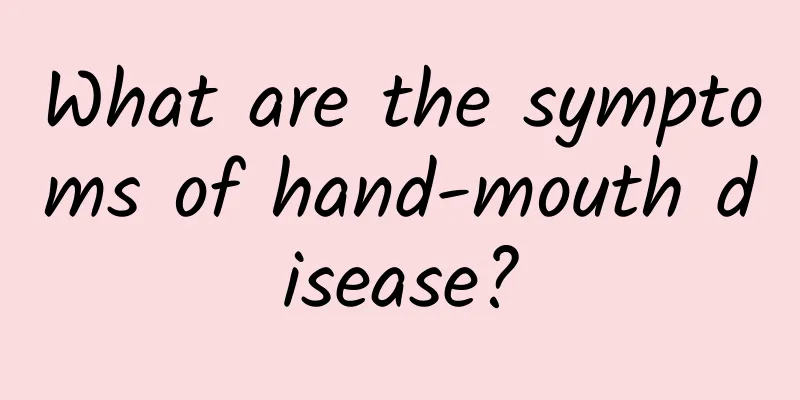What are the symptoms of hand-mouth disease?

|
Hand, foot and mouth disease is a disease that mainly occurs in children. The symptoms of this disease are relatively obvious skin diseases, and its symptoms become more and more obvious. Hand, foot and mouth disease has certain symptoms, and these symptoms can occur in various parts of our skin, but there are still many people who don’t know its specific symptoms. So what are the symptoms of hand, foot and mouth disease? 1. General symptoms (1) Acute onset, with an incubation period of 3-5 days, and prodromal symptoms such as low-grade fever, general malaise, and abdominal pain. Scattered painful, millet- to mung-bean-sized blisters appear on the oral mucosa, and maculopapules and herpes appear on the hands and feet. Initially, they are maculopapules, which later turn into herpes. They are round or oval, about 3-7 mm in size, like the size of a grain of rice, smaller than the chickenpox rash, harder in texture, with a red halo around it, and less fluid in the blisters. Dot-like or flaky erosions can be seen under the grayish-white membrane. After the rash subsides, no scars or pigmentation are left. If there is a secondary infection, the skin damage will often be aggravated. (2) In addition to the hands, feet and mouth, herpes can also be seen on the buttocks and near the anus, and occasionally on the trunk and limbs. They dry up and disappear after a few days. The rash is not itchy and painful. (3) Some children may develop generalized papules and blisters, accompanied by aseptic meningitis, encephalitis, myocarditis, etc. It may be accompanied by symptoms such as cough, runny nose, loss of appetite, nausea, vomiting, and headache. (4) Some cases only present with rash or herpetic pharyngitis. The whole course of the disease is about 5-10 days. Most cases can heal themselves with a good prognosis and no sequelae. 2. Symptoms of severe cases: In a few cases (especially those under 3 years old), encephalitis, encephalomyelitis, meningitis, pulmonary edema, circulatory failure, etc. may occur. (1) Respiratory system manifestations include: shallow and difficult breathing, changes in respiratory rhythm, cyanosis of the lips, white, pink or bloody foamy fluid (sputum) in the mouth, and sputum sounds or moist rales in the lungs. (2) Neurological manifestations include poor spirits, drowsiness, headache, vomiting, easy fright, limb tremors, weakness or paralysis; physical examination may reveal meningeal irritation and weakened or absent tendon reflexes; critical cases may manifest as frequent convulsions, coma, cerebral edema, and brain herniation. (3) Circulatory system symptoms include: pale complexion, increased or decreased heart rate, shallow, rapid, weakened or even absent pulse, cold limbs, cyanosis of fingers and toes, and increased or decreased blood pressure. |
<<: How to treat hand-to-mouth disease in the early stage
>>: What are the types of all-ceramic teeth?
Recommend
Why is the back of the elderly's hand swollen?
For the elderly, every uncomfortable reaction in ...
Feeling dizzy and having a confused mind?
As people's life and work pressures increase,...
Why do tooth joints click?
Generally speaking, tooth joint clicking is cause...
Diet therapy for cor pulmonale: this is the best
It is better to treat cor pulmonale through diet ...
How to get rid of excessive internal heat?
Fire energy exists in everyone's body. The mo...
What are Rongyan’s physical symptoms?
Quitting smoking is something that many friends w...
Reach out and grab this thing and a miracle will happen
There are many nerve endings and tissues on the h...
Is Huaqingdan a regular medicine?
Many female friends will have gynecological disea...
Why is there less menstrual flow in summer?
In the summer, if the menstrual volume is small, ...
How to treat vulvar curvature
Penile curvature is a symptom caused by genetic f...
What is the reason for high progesterone in the six sex hormones?
For women, if they find that the progesterone lev...
The dangers of moderate anemia in children
Anemia is a very serious disease. The chance of o...
I fell and my neck hurts like a stiff neck
The neck is a very fragile part of the human body...
Symptoms and treatment of keratitis
Keratitis can be said to be an eye disease that p...
What happened to the heart?
Cardiac enlargement is a common symptom of heart ...









